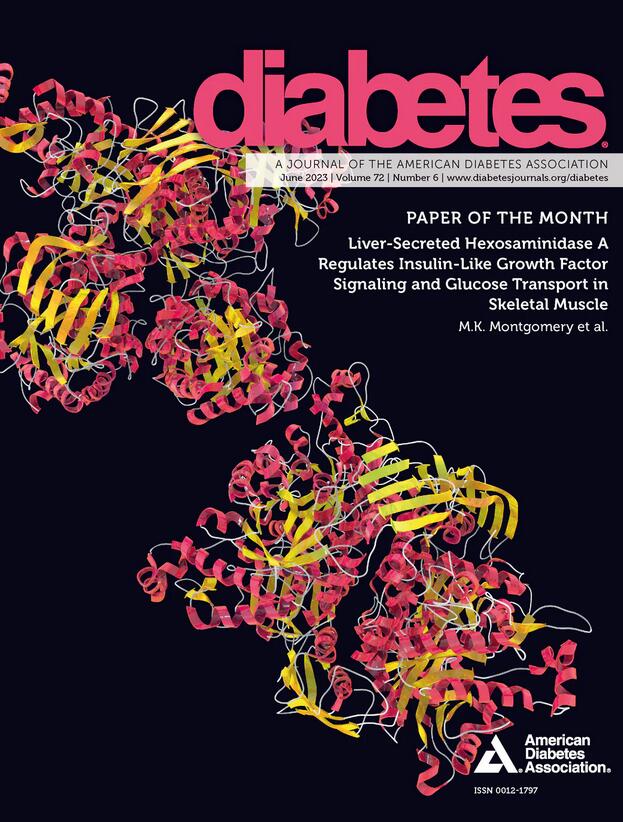Friend or foe: the paradoxical roles of MG53 in diabetes mellitus
IF 6.2
1区 医学
Q1 ENDOCRINOLOGY & METABOLISM
引用次数: 0
Abstract
MG53 is predominantly expressed in striated muscles. The role of MG53 in diabetes mellitus has been gradually elucidated but is still full of controversy. Some reports have indicated that MG53 is upregulated in animal models with metabolic disorders, and that muscle-specific MG53 upregulation is sufficient to induce whole-body insulin resistance and metabolic syndrome through targeting both the insulin receptor (IR) and IR substrate-1 (IRS-1) for ubiquitin-dependent degradation. Additionally, MG53 has been identified as a myokine/cardiokine that is secreted from striated muscles into the bloodstream and circulating MG53 has further been shown to trigger insulin resistance by binding to the extracellular domain of the IR, thereby allosterically inhibiting insulin signaling. Conversely, other studies have reported findings that contradict these results. Specifically, no significant change in MG53 expression in striated muscles or serum has been observed in diabetic models, and the MG53-mediated degradation of IRS-1 may be insufficient to induce insulin resistance due to the compensatory roles of other IRS subtypes. Furthermore, sustained elevation of MG53 levels in serum or systemic administration of recombinant human MG53 (rhMG53) has shown no impact on metabolic function. In this review, we will fully characterize these two disparate views, strive to provide critical insights into their contrasts and propose several specific experimental approaches that may yield additional evidence. Our goal is to encourage the scientific community to elucidate the effects of MG53 on metabolic diseases and the molecular mechanisms involved, thereby providing the theoretical basis for the treatment of metabolic diseases and the applications of rhMG53.朋友还是敌人:MG53 在糖尿病中的矛盾作用
MG53 主要在横纹肌中表达。MG53 在糖尿病中的作用已逐渐被阐明,但仍充满争议。一些报道指出,MG53 在代谢紊乱动物模型中上调,肌肉特异性 MG53 上调足以通过靶向胰岛素受体(IR)和 IR 底物-1(IRS-1)进行泛素依赖性降解,诱导全身胰岛素抵抗和代谢综合征。此外,MG53 已被确定为一种肌激素/心肌激 素,可从横纹肌分泌到血液中,循环中的 MG53 进一步被证明可通过与 IR 的细胞外结构域结合引发胰岛素抵抗,从而异位抑制胰岛素信号传导。相反,其他研究报告的结果却与这些结果相矛盾。具体来说,在糖尿病模型中,横纹肌或血清中的 MG53 表达没有明显变化,由于其他 IRS 亚型的补偿作用,MG53 介导的 IRS-1 降解可能不足以诱发胰岛素抵抗。此外,血清中 MG53 水平的持续升高或重组人 MG53(rhMG53)的全身给药均未显示出对代谢功能的影响。在这篇综述中,我们将对这两种截然不同的观点进行全面描述,努力为它们之间的对比提供重要见解,并提出几种可能获得更多证据的具体实验方法。我们的目标是鼓励科学界阐明 MG53 对代谢疾病的影响及其分子机制,从而为代谢疾病的治疗和 rhMG53 的应用提供理论依据。
本文章由计算机程序翻译,如有差异,请以英文原文为准。
求助全文
约1分钟内获得全文
求助全文
来源期刊

Diabetes
医学-内分泌学与代谢
CiteScore
12.50
自引率
2.60%
发文量
1968
审稿时长
1 months
期刊介绍:
Diabetes is a scientific journal that publishes original research exploring the physiological and pathophysiological aspects of diabetes mellitus. We encourage submissions of manuscripts pertaining to laboratory, animal, or human research, covering a wide range of topics. Our primary focus is on investigative reports investigating various aspects such as the development and progression of diabetes, along with its associated complications. We also welcome studies delving into normal and pathological pancreatic islet function and intermediary metabolism, as well as exploring the mechanisms of drug and hormone action from a pharmacological perspective. Additionally, we encourage submissions that delve into the biochemical and molecular aspects of both normal and abnormal biological processes.
However, it is important to note that we do not publish studies relating to diabetes education or the application of accepted therapeutic and diagnostic approaches to patients with diabetes mellitus. Our aim is to provide a platform for research that contributes to advancing our understanding of the underlying mechanisms and processes of diabetes.
 求助内容:
求助内容: 应助结果提醒方式:
应助结果提醒方式:


